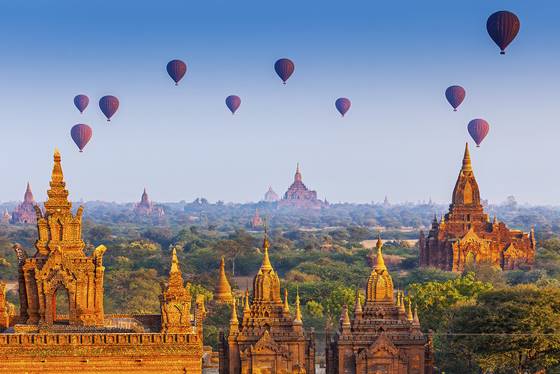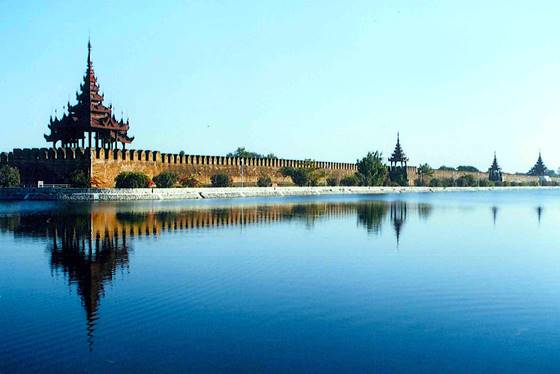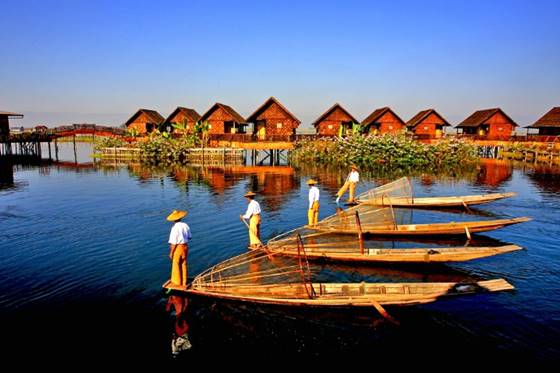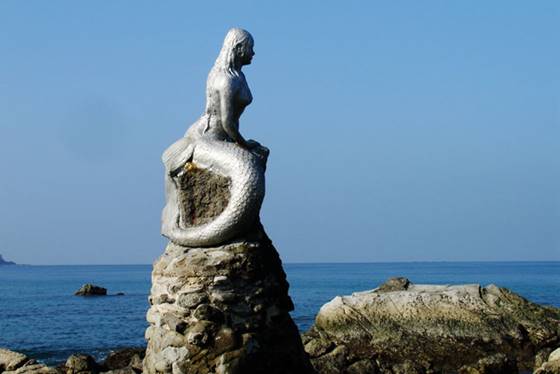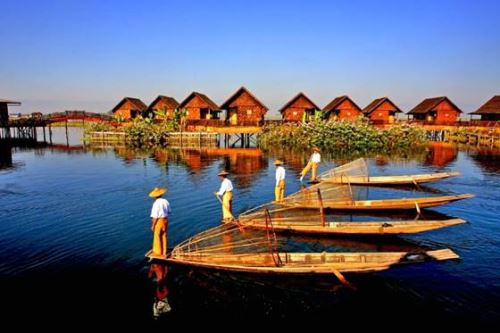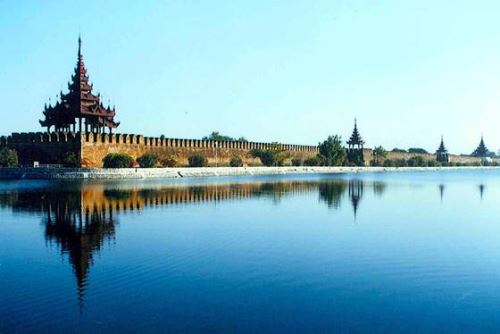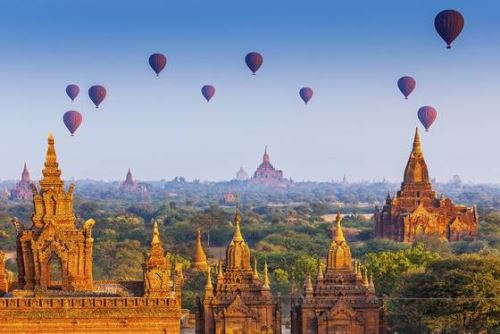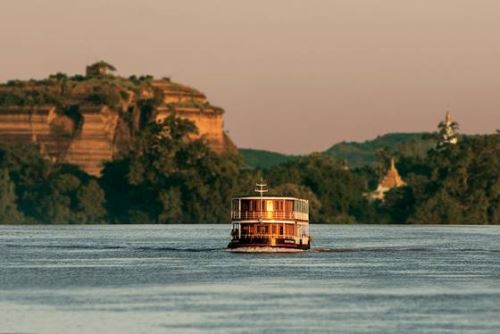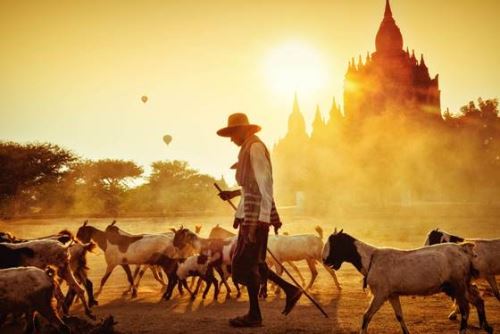One of the best places to visit in Asia is Yangon, Myanmar’s largest city. Nature lovers will appreciate the city’s stunning lakes, shady parks and verdant tropical trees. These are the reasons why it is dubbed ‘The Garden City of the East’. However, Yangon has more to offer than impressive scenery. This city is a melting pot—a diversity of cultures and communities in terms of people, settlement and religions. Because it serves as the country's main entrance and seaport, it is also the country’s centre of business. Yangon was founded in 1755 by King Alaungpaya; he established Yangon on the location of a small town named Dagon when he dominated the lower part of Myanmar. He was the one who gave the name Yangon, meaning ‘End of Strife’. In 1885, the name was anglicised as Rangoon when the British annexed the country. Yangon is a city that balances tradition, culture and modernity, making it a must-see for anyone who wants to see a different side of Asia.
Yangon attractions
There are many different attractions to see and experience in Yangon. Visitors will be pleasantly surprised to find many places of interest which will keep them busy for many days. These include places of a spiritual nature, green parks and gardens, and museums that provide an insight into the rich history and culture of Myanmar. We have listed some of the more popular attractions in the city, along with some attractions that may be lesser known ...
Read moreThere are many different attractions to see and experience in Yangon. Visitors will be pleasantly surprised to find many places of interest which will keep them busy for many days. These include places of a spiritual nature, green parks and gardens, and museums that provide an insight into the rich history and culture of Myanmar. We have listed some of the more popular attractions in the city, along with some attractions that may be lesser known and less visited, but may also be of interest.
Aung San Suu Kyi's House in Yangon Yangon
Until her release from house arrest in November 2010, anyone who wished to see Aung San Suu Kyi's house did so from the the other side of the Inya Lake, from a distance of 300 metres. All you could see then was the back of this crumbling colonial style mansion, shaded by a large tree. The front of the house on University Avenue was barricaded and guarded by security police. The Nobel Peace Prize Laureate and leader of the National League of Democracy was put under house arrest here off and on for 15 years since 1989. Subject to international pressure, the Burmese ruling military junta agreed to release Aung San Suu Kyi in 2010.
Shwedagon Pagoda in Yangon
It is said that no visit to Myanmar is complete without a trip to Shwedagon Pagoda. Considered one of the wonders of the religious world, the magnificent Shwedagon rises majestically over Singuttara Hill to the north of central Yangon, casting its golden gleam over the low-lying capital. This 2,500-years old structure, which contains the relics of four Buddhas, is the guardian temple of Yangon and the most sacred site for the people of Myanmar.
Sule Pagoda
The Sule Pagoda is an excellent landmark. It is said to be over 2,000 years old and contains a hair given by the Buddha to two Burmese merchants. Located on a roundabout in downtown Yangon. The golden pagoda is unusual in that its octagonal shape continues right up to the bell and inverted bowl. It is surrounded by small shops and all the familiar non-religious services such as of astrologists, palmists, and so on.
Bogyoke Aung San Market (Scott Market)
Bogyoke Aung San Market is situated in the heart of Yangon, on Bogyoke Aung San Road. The market was first built and inaugurated on the present premises in 1926. It was named Scott Market after Mr. C. Scott, the then Municipal Commissioner. Nowadays, it is called Bogyoke Aung San Market in honor of our national leader General Aung San.
It is known for its colonial architecture and inner cobblestone streets. The Bogyoke Zay, as it is commonly known, is the most popular tourist destination for shopping in Yangon. It has the largest selection of Myanmar souvenirs you can find under one roof. You can buy a variety of interesting Myanmar lacquerware, gems and jewellery at this market.
Maelamu Pagoda
Mae Lamu means Maid of the Mangrove. There was a legendary saying about this Pagoda. It was said that a hermit once came upon a mangrove tree bearing an abnormally large bud which he took to his retreat and it later produced a girl child. The child was nurtured and brought up by the hermit who named her Mae Lamu on account of her being born of a mangrove fruit. She grew up into a beautiful woman and Sakka (or the Indra), monarch of the celestial divinities, fell in love with her. After asking for her hand in marriage from the hermit, the lord of the celestial gods fathered a child who, it was said eventually became King of Okkalapa, the name by which Yangon had been referred to in the remote past. Representations of the Maid of the Mangrove and her heavenly suitor can be seen at the southwest corner of the Shwedagon Pagoda.
Kabar Aye Pagoda (or) the World Peace Pagoda
Unlike other pagodas found all over the country, the Kabar Aye Pagoda was built in 1952, as it name implies, it is dedicated towards the realisation of global peace. The circular platform around the main stupa is enclosed in the manner of a cave-temple and there are five porches decorated in the traditional style of flamboyant arched pediments, lotus flowers, lotus buds and the swastika motif in carved stucco. In passing it might be pertinent to explain why and how the swastika came to be associated with Buddhism. As some dictionaries of the English language will point out, the origin of the term swastika is svastika from Sanskrit denoting "well being"-the device being associated with sun worship and veneration of the wheel originating with the ancient Aryans. To Buddhists however, it is in the context of its association with Dhammacakka (the Wheel of Law), the first sermon preached by the Buddha after attaining enlightenment, that this rotating wheel motif is employed on religious structures.
National Museum
The National Museum of Myanmar was founded in 1952 with its premises at what was once the Jubilee Hall. In 1970 the museum was moved to a more spacious building on Pansodan Street. But these premises were not originally constructed to house a museum. The present National Museum is located on Pyay Road in a splendid five-storey building constructed for the purpose in spacious and specially landscaped grounds. Priceless ancient artefacts, works of art and historic memorabilia are on display in 14 halls on four storeys. Three halls on the ground floor hold exhibits on the evolution the Myanmar script and alphabet, the Lion Throne Room and Ratanapon Period pieces.
Maelamu Pagoda
Mae Lamu means Maid of the Mangrove. There was a legendary saying about this Pagoda. It was said that a hermit once came upon a mangrove tree bearing an abnormally large bud which he took to his retreat and it later produced a girl child. The child was nurtured and brought up by the hermit who named her Mae Lamu on account of her being born of a mangrove fruit. She grew up into a beautiful woman and Sakka (or the Indra), monarch of the celestial divinities, fell in love with her. After asking for her hand in marriage from the hermit, the lord of the celestial gods fathered a child who, it was said eventually became King of Okkalapa, the name by which Yangon had been referred to in the remote past. Representations of the Maid of the Mangrove and her heavenly suitor can be seen at the southwest corner of the Shwedagon Pagoda.
In 1959, during the clearing of land near the Ngamoeyeik tidal stream as part of the programme in setting up the new township of North Okkalapa, the stump of a ruined pagoda overgrown by a hardwood tree was revealed. Eventually a donor materialized who built a new pagoda at this site. As the ruins were being cleared before the construction of the new pagoda, a casket bearing a figurine of a woman was recovered from the reliquary of the ruined pagoda. The figurine was said to resemble the Mae Lamu statue on the Shwedagon Pagoda exactly and in the light of the legendary association of a crocodile named Ngamoeyeik involved in the legend of King Okkalapa with the location of the ruined pagoda by the Ngamoeyeik stream, the shrine came to be known as Mae Lamu Pagoda. A stylized fruit of the mangrove is also featured in the construction of the pagoda. There is also an image of the reclining Buddha and clustered around these Main edifices are compositions in stucco of various episodes in the life of the Buddha.
Kyaiktiyo: Golden Rock Pagoda near Yangon
Another wonder of Buddhist monuments, Kyaiktiyo or the Golden Rock Pagoda, which precariously hangs over a cliff edge 1,100 metres above sea level, defying all laws of gravity, is not to be missed by any visitor to Myanmar. Located 180km south of Yangon in the town of same name, Kyaiktiyo is regarded as one of sacred sites that any devout Myanmar must visit once in their lifetime. The rock itself is 5.5 metres high and is topped by a small pagoda or zedi. It is covered in gold leaf and, like any other Buddhist monument in Myanmar, contains a hair relic of Buddha Gautama.
Any geologist will explain the Kyaiktiyo phenomenon as a volcanic accident, but to the local people this is a work of the force that is larger than life, a miracle of Buddha himself that keeps the rock up. Legend relates the story of a yogi who, after having been given a hair strand of the Buddha, was looking for a stupa to contain it. As he lived in the wild, this proved almost impossible. The task was taken over by Indra, the supreme Hindu god, who found a suitable rock under the ocean and deposited it on Paung Laung hill. Kyaiktiyo Pagoda is located in a town of the same name, 180km east of Yangon. A 4-5 hour car journey will take you to the Kinpun base camp where visitors ride in a small open top truck along the windy road a further eight kilometres (it takes about 30 minutes). From here, either hike up another two kilometres (about 45 minutes), or ride a sedan chair, which should cost about US$ 25 one way. As this is quite a long journey, this is probably not a day-trip outing. Spend a night in one of the agreeable hotels up in the hills so you can soak up the atmosphere while watching worshippers come and go. The view at the top is spectacular, especially at sunrise or sunset. Opening Hours: All year round, best time to visit is in the dry season from October to April Location: Kyaikto in Mon State, 180km east of Yangon, via Bago



